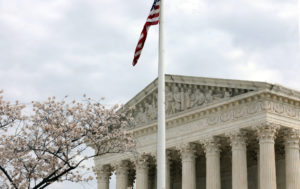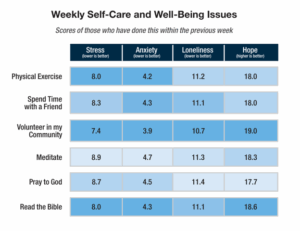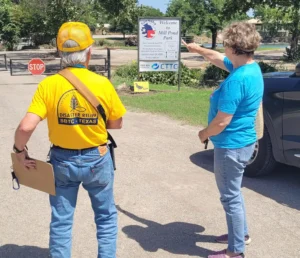
NASHVILLE, Tenn. (BP) — An evangelical apologist’s characterization of one biblical verse has called into question his entire 700-page book and his belief in the inerrancy of Scripture, with two respected theologians saying the matter demonstrates that it is not sufficient to affirm biblical inerrancy in principle without also affirming it in detail.
 In “The Resurrection of Jesus: A New Historiographical Approach,” Mike Licona presents a defense of the historicity of the bodily resurrection of Jesus from the dead, arguing that Jesus’ resurrection must have been literal.
In “The Resurrection of Jesus: A New Historiographical Approach,” Mike Licona presents a defense of the historicity of the bodily resurrection of Jesus from the dead, arguing that Jesus’ resurrection must have been literal.
But the passage at issue is Matthew 27:51-53: “At that moment the curtain of the temple was torn in two from top to bottom. The earth shook, the rocks split and the tombs broke open. The bodies of many holy people who had died were raised to life. They came out of the tombs after Jesus’ resurrection and went into the holy city and appeared to many people.”
Licona, a former apologetics coordinator at the North American Mission Board, writes, “It seems best to regard this difficult text in Matthew as a poetic device added to communicate that the Son of God had died and that impending judgment awaited Israel.” The bodies of many holy people, Licona suggests, were not literally raised to life.
R. Albert Mohler Jr., president of Southern Baptist Theological Seminary, commended Licona’s “masterful defense” in his book of the resurrection of Christ. “This is a very serious scholar making a very serious case for the fact that Jesus was indeed raised from the dead — and that this event is historically documented and accessible to the modern historian.”
But, Mohler said, dehistoricizing Matthew 27:52 “is calamitous and inconsistent with the affirmation of biblical inerrancy.”
“It is not enough to affirm biblical inerrancy in general terms,” Mohler wrote at albertmohler.com Sept. 14. “The integrity of this affirmation depends upon the affirmation of inerrancy in every detailed sense.”
In the book, Licona acknowledged the weight of his argument, stating, “If some or all of the phenomena reported at Jesus’ death are poetic devices, we may rightly ask whether Jesus’ resurrection is not more of the same.”
Mohler said Licona asked exactly the right question, but in giving the wrong answer he “handed the enemies of the resurrection of Jesus Christ a powerful weapon — the concession that some of the material reported by Matthew in the very chapter in which he reports the resurrection of Christ simply did not happen and should be understood as merely ‘poetic device’ and ‘special effects.'”
Dehistoricizing a seemingly incidental event in the biblical record “may seem to be a relatively minor issue, but it is in fact very important,” Norman Geisler, distinguished professor of apologetics at Veritas Evangelical Seminary in California, said.
Geisler, in three open letters to Licona accessible at normangeisler.net, compares the matter to the Evangelical Theological Society’s 1983 expulsion of Robert Gundry, who also dehistoricized the Gospel record. “Since Mike Licona is a member of ETS, it follows that his view is inconsistent with the ETS stand on inerrancy.”
In “An Open Response to Norman Geisler” dated Aug. 31, Licona said he wanted to be clear that he continues to affirm the evangelical distinctive of biblical inerrancy.
“When writing a sizable book, there will always be portions in which one could have articulated a matter more appropriately,” Licona wrote. “And those portions, I suppose, will often be located outside the primary thesis of the book, such as the one on which Dr. Geisler has chosen to focus. When writing my book, I always regarded the entirety of Matthew 27 as historical narrative containing apocalyptic allusions.”
Licona said while additional research remains, currently he is “just as inclined to understand the narrative of the raised saints in Matthew 27 as a report of a factual (i.e., literal) event as I am to view it as an apocalyptic symbol. It may also be a report of a real event described partially in apocalyptic terms.”
Below Licona’s response was a list of 13 scholars who, though they may not hold Licona’s position, “are in firm agreement that it is compatible with biblical inerrancy.”
Four Southern Baptist seminary professors were on the list: James Chancellor of Southern Seminary, Jeremy Evans and Heath Thomas of Southeastern Baptist Theological Seminary and Bill Warren of New Orleans Baptist Theological Seminary. Professors from Liberty University, Biola University and Wheaton College also lent their support.
Chancellor told Baptist Press his name is no longer a part of the list and declined further comment. Thomas told Baptist Press he and Evans “have removed our names from the letter.”
Warren, director of the Center for New Testament Studies at New Orleans Seminary, defended Licona in a Christianity Today article Nov. 7, saying the evangelical academic community should not be so hard on him.
“What should be kept in mind,” Warren told CT, “is that a person who has been well-received, written prolifically in multiple contexts, and taken firm stands in the apologetic arena in defense of orthodoxy surely should not be tossed aside based on his interpretation of one passage in a massive volume.”
Evans said Southeastern is going to address the issue as part of a review of Licona’s book in the seminary’s journal and a scholarly forum.
“I think the panel and the journal are the appropriate places for such a discussion to occur and look forward to what develops as the scholars interact,” Evans told BP.
The edition of the Southeastern Theological Review which is slated to include a review of Licona’s book is expected next summer, Evans said, and he referred questions about the panel to Thomas. Licona said Geisler declined an invitation to participate in the forum but Mohler accepted.
Gary Habermas, chair of the philosophy department at Liberty University, provided a statement to BP explaining his support of Licona.
“In my opinion, Mike Licona doesn’t at all deny inerrancy by his interpretation of Matthew 27:52-53,” Habermas wrote. “Evangelicals regularly allow for all sorts of similar moves where particular texts are taken other than literally, whether it is the old earth/young earth discussions of the word ‘day’ in Genesis 1, dispensationalist/preterist/partial preterist angles on Jesus’ Olivet Discourse, or the interpretation of Peter’s words in Acts 2:16-21, where I think that very few scholars would say that the signs in the sun, moon and so on were fulfilled literally on Pentecost.
“The list is much longer than this, too. So why is Licona’s view singled out for criticism?” Habermas wrote.
Licona, in written comments to Baptist Press, said he can only be criticized for dehistoricizing the raised saints passage if Matthew intended for them to be understood in a historical sense.
“If he did not, then it is Drs. Mohler and Geisler who have ‘historicized’ them,” Licona wrote. “And in a text like Matthew 27:52-53 with which scholars have wrestled for years, caution and prudence rather than dogmatism should prevail.”
Historical research, Licona said, must work on a case-by-case basis. The bodily resurrection of Jesus was an event that occurred in space-time and is remarkably different than what is known about Matthew’s raised saints, he said. Jesus’ resurrection has been corroborated throughout Scripture and by other historical accounts; the raised saints passage has not.
“Three chapters earlier in Matthew 24, Jesus mentions celestial signs such as the sun and moon going dark and the stars falling out of the sky. Many scholars regard these as apocalyptic symbols in spite of the fact that they appear in context sandwiched between literal events such as the martyrdom of the disciples and Jesus’ Second Coming,” Licona told BP.
“Scholars who regard the celestial signs as apocalyptic symbols wouldn’t deny Jesus’ Second Coming any more than one would deny the historicity of 9/11 when describing the tragic events of that day as ‘earth shaking.'”
The bottom line, Licona said, “is that the apostles were crystal clear that Jesus’ resurrection was intended to be understood as a historical event, whereas it is not clear how Matthew intended the raised saints to be understood.”
Geisler said that until Licona publicly recants his published view of the passage, his position should be considered “unorthodox, non-evangelical and a dangerous precedent for the rest of evangelicalism.”
“With over half a century of experience in the scholarly world, I would also add one last word to other young evangelical scholars: resist the desire to be an Athenian (Acts 17:21),” Geisler warned. “There is something more important than having a seat at the table of contemporary scholarship; it is putting Lordship over scholarship when necessary.
“Further, there is something more important than ‘a new historiographical approach’; it is the ‘old’ historiographical approach which takes the Gospel record — all of it — as historical. It has served the Church well for nearly 2,000 years, and there is no good reason to change it now.”
–30–
Erin Roach is assistant editor of Baptist Press. Get Baptist Press headlines and breaking news on Twitter (@BaptistPress), Facebook (Facebook.com/BaptistPress) and in your email (baptistpress.com/SubscribeBP.asp).















